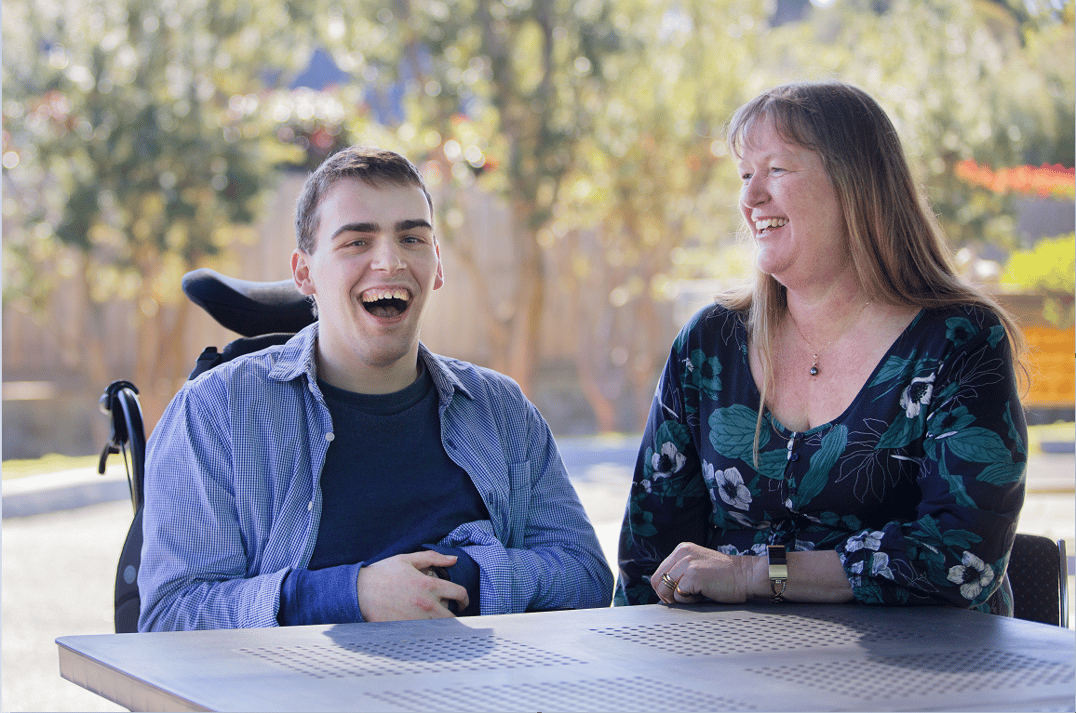Best Disability Support Worker Agency in Sydney
Empowering adults through Positive Behaviour Support for adults with a disability. Tailored strategies for fostering independence, growth, and increased quality of life.

Maree works as an Access Services Advisor and Trainer at Scope's Communication and Inclusion Resource Centre, and a user of Augmentative and Alternative Communication (AAC), Maree is instrumental in our Communication Access and Disability Inclusion services.
In this interview titled "My Journey with AAC," Maree discusses her experiences with AAC, both personally and professionally, and how it supports communication access and inclusion for people with communication access requirements.
What was your first AAC experience as a child?
Not being able to talk has been a big factor in the development of my life. In my childhood I remember starting to communicate through "writing letters in the air". I can’t quite remember how this started but I know my mum helped me to start by teaching me to spell with cards. Although it was time consuming, I was able to communicate on some level.
At school I could communicate with a few people who had learnt my way of communicating. Although, at the time, I was relatively happy, I can now see how restricted my social life was. It was a matter of waiting for people to start talking to me rather than being able to start a conversations with anyone or to be able to gossip. In some way, this still has an effect on me today. Even though I now have a Lightwriter, which has made communication much easier, there is still some hesitancy on my part to initiate conversations with people I don't know.
Another memory of childhood is my mother helping me to learn to read and write. She would show me cardboard signs with words written on them like “bed”, “Betty”, “John” and so on. I remember a brown coloured paper book with pictures and words beneath them. I would then have several cards with words on them and I would have to match these to the words in the book mum would choose. My learning of numbers was via a toy. It was a cylinder top like shape with horses racing round when it was spun. There was a small window on the side that would show the winning horse when it stopped turning. I would then have to say the number of the winning horse.
What was your first high tech system?
While I was at a sheltered workshop in the 1970’s I was introduced to the Canon Communicator which was like a ticket tape machine. I would type out what I needed to say, and the message would come out the other side of the machine on thin strips of paper. This assisted me to start conversations and mix with people. However, often the person receiving the message would think I was giving them pieces of scrap paper to throw away. I would then have to tell them with another note to read the first note which made it frustrating. However, this machine did give me the confidence to meet new people, try different sports and go on trips with groups.
What do you use now and what does AAC means for your life?
After I completed my Law Degree in 1994, I decided to do the Leo Practical Training course. I was still using the Canon Communicator. A few students started talking to me using the Canon Communicator, but most students ignored me. One incident happened there, which literally changed my life during the Course and for the rest of my life. Around May/June that year I was given the opportunity to try a new communication device called the Lightwriter Dectalk. It was an amazing machine at that time, because it has a voice output as well as being able to type messages onto a two-way screen. At first I had a trial of it for 6 weeks. In that small period, this machine made such an impact on the other students’ acceptance of me in both the class and social situations. My lightwriter completely increased my self confidence to apply for work opportunities, start playing boccia tournaments, national and international; applying for work positions; and going on overseas cruises and trips.